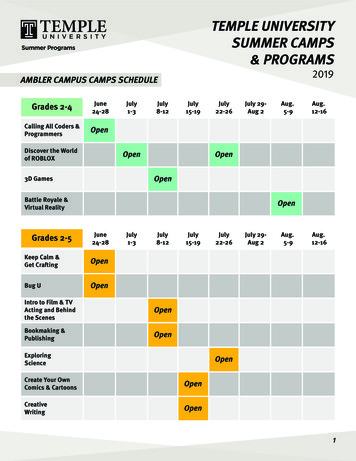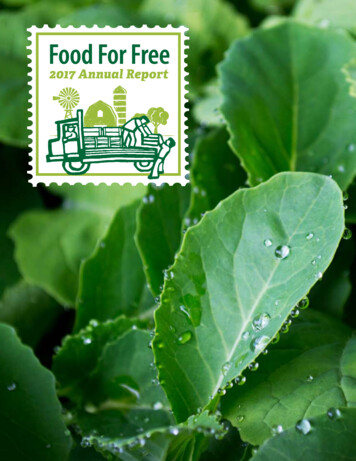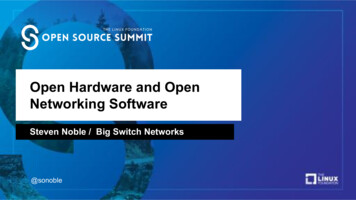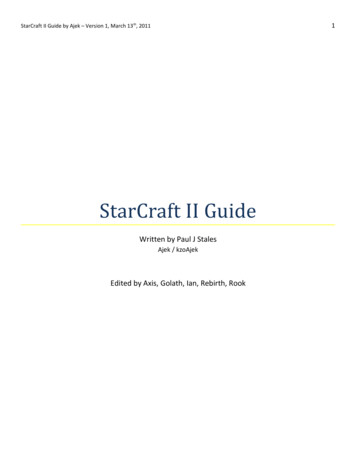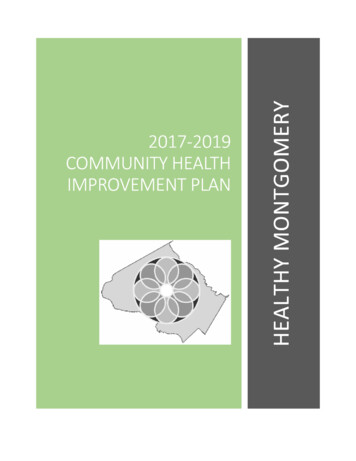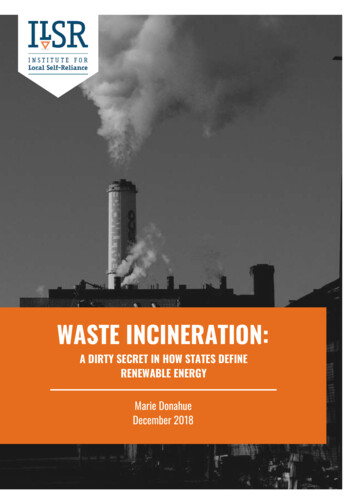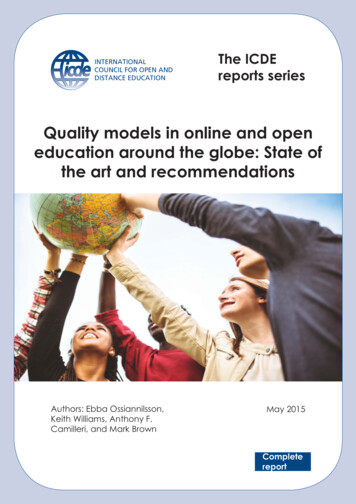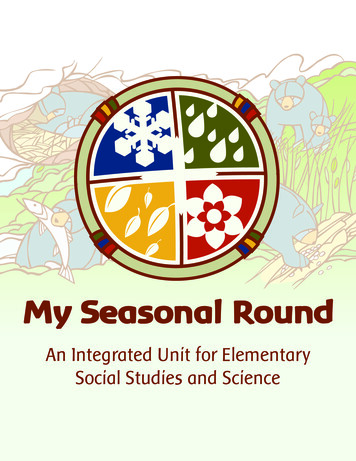
Transcription
AcknowledgementsPlanning and Instructional DesignJanet Bartz (Manager of Instructional Media, Open School BC)Leanne Baugh (Writer/Project Manager, Open School BC)Jean Bowman (Teacher, Royal Oak Middle School, Saanich)Anne Hill (Curriculum and Resources Coordinator, Aboriginal Education, Ministry of Education)Ken Lees (Teacher, G.P. Vanier, Comox Valley)Solvig Norman (Project Manager/Instructional Designer, Open School BC)Jennifer Riddel (Project Manager, Open School BC)ReviewJean Bowman (Teacher, Royal Oak Middle School, Saanich)Ken Lees (Teacher, G.P. Vanier, Comox Valley)Karen MacEwan (Teacher, Cordova Bay Elementary, Saanich)Tools for Generating Questions and Web Design/DevelopmentJanet Bartz (Manager of Instructional Media, Open School BC)Christine Ramkeesoon (Instructional Media Coordinator, Open School BC)WritingLeanne Baugh (Writer/Project Manager, Open School BC)Proof of Concept TestMany thanks to Karen MacEwan and her Grade 5 class at Cordova Bay Elementary for trying outsome of our question generating tools.Print HistoryNew, October 2013Revised, May 2020
My Seasonal RoundTable of ContentsAbout This Resource . . . . . . . . . . . . . . . . . . . . . . . . . . . . . 1Lesson 1 – What Is a Seasonal Round?Preparing For the Lesson. . . . . . . . . . . . . . . . . . . . . . . . . 7Delivering the Lesson . . . . . . . . . . . . . . . . . . . . . . . . . . 11Lesson 2 – How Do Seasonal Changes Affect Plants and Their Habitats?Preparing For the Lesson. . . . . . . . . . . . . . . . . . . . . . . . . 18Delivering the Lesson . . . . . . . . . . . . . . . . . . . . . . . . . . 20Lesson 3 – How Do Seasonal Changes Affect Animals and Their Habitats?Preparing For the Lesson. . . . . . . . . . . . . . . . . . . . . . . . . 25Delivering the Lesson . . . . . . . . . . . . . . . . . . . . . . . . . . 28Lesson 4 – What Are the Four Geographic Regions of BC?Preparing For the Lesson. . . . . . . . . . . . . . . . . . . . . . . . . 33Delivering the Lesson . . . . . . . . . . . . . . . . . . . . . . . . . . 35Lesson 5 – What Does a Seasonal Round Look Like?Preparing For the Lesson. . . . . . . . . . . . . . . . . . . . . . . . . 38Delivering the Lesson . . . . . . . . . . . . . . . . . . . . . . . . . . 42Investigate and PresentResearch. . . . . . . . . . . . . . . . . . . . . . . . . . . . . . . . . 47Continued Work on Living Dioramas. . . . . . . . . . . . . . . . . . . 48Present. . . . . . . . . . . . . . . . . . . . . . . . . . . . . . . . . . 48RubricsClass Participation Rubric. . . . . . . . . . . . . . . . . . . . . . . . . 49Group Work Self-Assessment Rubric . . . . . . . . . . . . . . . . . . . 50Living Diorama Presentation Rubric . . . . . . . . . . . . . . . . . . . 51Pause and Ponder Journal Entry Rubric. . . . . . . . . . . . . . . . . . 52
My Seasonal Round About This ResourceThis unit illustrates the integration of Social Studies and Science. The seasonalround was chosen as a theme for this unit because it lends itself well tointegrating the topics of BC First Nations study in Social Studies and habitats inScience. A seasonal (or annual) round:refers to the pattern of movement from one resource-gathering area to anotherin a cycle that was followed each year. Spring, summer and fall saw the peoplemoving to a variety of resource areas while during the harsher winter theygathered in winter villages. The abundance of resources also determined howoften people moved. In areas that had a greater abundance of variety, peoplecould stay in one location for longer than in areas where resources were scarcer.Campbell, Kenneth, Charles Menzies, and Brent Peacock.B.C. First Nations Studies. BC Ministry of Education, 2003, page 25The topic of the resource are seasonal rounds in the four geographic regionsof BC, through the perspective of Indigenous or First Nations groups (past andpresent) who live in these regions. Topics that will be explored include: habitatnatural resourcesstability and changeliving and non-living components of habitats Province of British Columbia AnIntegrated Unit for Elementary Social Studies and Science1
My Seasonal Round Focus questions guide this unit. In the first lesson, tell students the following:You are a member of a BC First Nation (specific First Nation to be chosenlater). You’ve been selected to live one seasonal round with your FirstNations ancestors in pre-contact time. When you return to the present,you’ll need to report back on the differences and similarities between thetwo time periods.You’ll also have to decide whether to stay in the present or return to livewith your ancestors. To decide, you’ll need to answer the following unitfocus questions: How is the seasonal round you live through in the present day differentfrom that of your pre-contact ancestors? What time period would you prefer to live in and why?To complete the unit: Students will gather journal entries, activities and field trip worksheets in aSeasonal Round Field Journal. Students will work in small groups to create a “living diorama” of a seasonalround of a BC First Nations community — in past and present time periods.The living dioramas will originate from students’ interests and inquires, andcan include: creating structures (components) such as model buildingrole playingcollecting or making “artifacts,” tools, or costumesperforming a song, dance, or skit (see note below)cookingcreating a multimedia presentation (photos, video)forming a tableauwriting and illustrating a picture bookdrawing or painting a postermaking a collageThe completed dioramas will be the students’ final demonstration oflearning and will be shared with the rest of the class, parents, communitymembers, and possibly other students in the school.Note: Teachers are reminded that songs and dances may have spiritualsignificance. In many cases, performing a dance or song is a privilege tobe earned. Imitations of these important cultural traditions may be seen asdisrespectful and offensive. Students will answer the unit focus questions individually during the finalday of sharing.2An Integrated Unit for Elementary Social Studies and Science Province of British Columbia
My Seasonal Round Curricular FitThe topics in this resource fit well with the “Curricular Competencies” and“Content” for Grade 3 Social Studies and Science. The activities also addresslearning standards found at other grade levels and in other subject areas. A varietyof options are provided in this resource to help you adapt activities to meet theneeds of your students and to address multiple learning standards.Core Competencies Communicating: Connecting and Engaging with Others I share my ideas and try to connect them with others’ ideas. Critical & Reflective Thinking: Analyzing and Critiquing I can develop or adapt criteria, check information, assess my thinking, anddevelop reasoned conclusions, judgments, or plans. Social Awareness and Responsibility: Contributing to Community andCaring for the Environment I can identify ways my actions and the actions of others affect my communityand the natural environment.First Peoples Principles of Learning Learning is holistic, reflexive, reflective, experiential, and relational (focusedon connectedness, on reciprocal relationships, and a sense of place) Learning recognizes the role of indigenous knowledge Learning is embedded in memory, history, and storyAboriginal Worldviews and Perspectives Connectedness and Relationships Local Focus Engagement with the Land, Nature and OutdoorsSocial Studies 3Big Ideas Indigenous societies throughout the world value the well-being of the self,the land, spirits, and ancestors. Indigenous knowledge is passed down through oral history, traditions, andcollective memory.Curricular Competencies Explain why people, events, or places are significant to various individualsand groups (significance) Explain why people’s beliefs, values, worldviews, experiences, and roles givethem different perspectives on people, places, issues, or events Province of British Columbia AnIntegrated Unit for Elementary Social Studies and Science3
My Seasonal Round Content interconnections of cultural and technological innovations of global andlocal indigenous peoples oral history, traditional stories, and artifacts as evidence about past FirstPeoples cultures relationship between humans and their environmentScience 3Big Idea Living things are diverse, can be grouped, and interact in their ecosystems.Curricular CompetenciesQuestioning and predicting Demonstrate curiosity about the natural worldProcessing and analyzing data and information Experience and interpret the local environment Identify First Peoples perspectives and knowledge as sources of informationCommunicating Express and reflect on personal or shared experiences of placeContent biodiversity in the local environment the knowledge of local First Peoples of ecosystemsCross-curricular Connections Language Arts Math ArtPersonalized LearningThis resource supports the personalized learning approach where: Students’ interests, ideas and passions guide the learning. Students’ different ways of learning are supported. Teacher assessment is ongoing and the teacher monitors progressthroughout the unit. Students engage in peer and self-assessment. Community resources support inquiry-based learning.4An Integrated Unit for Elementary Social Studies and Science Province of British Columbia
My Seasonal Round How do I use this resource?The unit spans three to four weeks. To adapt this timeline, consider these options: Teach most of the unit in one 3-week period, but revisit some of the ideasthroughout the year as the seasons change. Break up the contents of the unit to span the entire year. Students observe the changing seasons as they occur. Students have the chance to observe a local habitat several timesthroughout the year and record their observations, comparing andcontrasting what they find in each season. Students take part in different seasonal round activities at different timesof the school year.A variety of lessons and activities are suggested in this unit. You may choose to dosome of these activities as they are, adapt them to suit your needs, or substituteactivities specific to your geographic region of British Columbia.Questions, resources, and sequence are suggested, but the students’ inquiry willdetermine how each lesson will develop the unit. The lessons progress in thefollowing way: Lesson 1 – What is a seasonal round? Lesson 2 – How do seasonal changes affect plants and their habitats? Lesson 3 – How do seasonal changes affect animals and their habitats? Lesson 4 – What are the four main geographic regions of BC, and what aretheir different features? Lesson 5 – What does a seasonal round look like? Investigate and Present – Students research to create and share livingdioramas with parents, other students, and community.Supporting Online ResourcesThis unit is supported by a companion website: Open School BC, My Seasonal Roundhttp://www.openschool.bc.ca/elementary/my seasonal round/The site includes resources for both the teacher and students: An annotated list of referenced resources for teachers and students Blackline Masters Tools for Generating Questions visual aids Province of British Columbia AnIntegrated Unit for Elementary Social Studies and Science5
Preparing For the LessonMy Seasonal RoundWhat Is a Seasonal Round?Learning ObjectivesStudents will: discuss their prior knowledge generate questions for inquiry create a personal seasonal roundcalendar reflect on their learningTime frameTwo to four classesCross-curricular ConnectionsSocial Studies, Language Arts, ArtPreparing For the Lesson Research seasonal rounds. Collect resources for the lesson and for the unit on seasonal round. If possible, invite an Elder or First Nations community member to theclass to discuss seasonal round. Contact your District Aboriginal EducationCoordinator who can assist you in contacting the local Aboriginalcommunity.Ministry of Education, Aboriginal Contact – Basic lWeb/AB.do Have students make a Seasonal Round Field Journal to hold their reflectionentries and other paper-based activities. They could use a binder or make a journal. Journals will be handed in to teachers at the end of the unit. For journal ideas see:Entangled Harmony, Garden Journel for urnal-for-children/MaterialsBlackline Masters “Personal Seasonal Round Calendar” (Blackline Masters, page 11) “Pause and Ponder Journal” (Blackline Masters, page 1)Books Armstrong, Jeannette C., Neekna and Chemai. Theytus Books, 2018.This book introduces Neekna and Chemai, two little girls growing up in theOkanagan Valley in pre-contact time. Through these two friends, we learnabout the seasonal life patterns of the Okanagan people. Gear, Alison, Taan’s Moons: A Haida Moon Story. McKellar and Martin, 2004.This story is based on one version of the Haida Moon Cycle. Moons in thisstory depict the passage of time and each moon is accompanied by a poem.6An Integrated Unit for Elementary Social Studies and Science Province of British Columbia
Preparing For the LessonMy Seasonal Round Prince, Leona, A Dance Through the Seasons. Fireweed Canada, 2018.This is a story of Young Woman and Turtle. As they move through theseasons together, Young Woman learns that growing up takes patience andtime. Spalding, Andrea, Solomon’s Tree. Orca Books, 2002.Solomon watches a big old maple outside his house through all the seasonsand in all weather. Solomon is devastated when a storm tears it up by itsroots. But he makes a mask from part of the tree with his uncle and learnsthat the cycle of life continues and so does the tree.Online Resources Google images of seasonal rounds (use search term “seasonal”)Other Books, videos, photos, and posters of the four seasons, the seasonal round,and animals and habitats Computer and projectorBackground InformationTeacher Resources Definition of seasonal round:Also known as the annual round, this term refers to the pattern of movementfrom one resource-gathering area to another in a cycle that was followed eachyear. Spring, summer and fall saw the people moving to a variety of resourceareas while during the harsher winter they gathered in winter villages. Theabundance of resources also determined how often people moved. In areas thathad a greater abundance of variety, people could stay in one location for longerthan in areas where resources were scarcer.Campbell, Kenneth, Charles Menzies, and Brent Peacock.B.C. First Nations Studies. BC Ministry of Education, 2003. The Learning Circle: Classroom Activities on First Nations in Canada –Ages 4 to 7, Unit 2 – The SeasonsLesson plan about First Nations and seasonal 0132377/1535460393645 Resource Gathering, Seasonal Round StsillenThis website discusses the seasonal round of the Secwepemc First Nations(Southern Interior).http://secwepemc.sd73.bc.ca/sec village/sec round.html TrailTribes, Camp Life and Seasonal RoundThis website tells the story of the seasonal round of the Blackfeet FirstNations (primarily Alberta and Montana) discussing seasonal activities andthe plants and animals harvested for fe-and-seasonal-round.htm Province of British Columbia AnIntegrated Unit for Elementary Social Studies and Science7
My Seasonal RoundPreparing For the Lesson Alaska Native Knowledge Network, The Four Corners of Life: A TraditionalSeasonal Round (Athabascan)This website tells of the Four Corners of Life — the seasonal round ofthe Minto First Nation. It includes very good information on events andactivities during the seasons, and also written oral histories about theseasonal round. (Oral histories could be read out to an/ObservingSnow/fourcorners.html Cultural Survival, Wild Food in its Season: the Seasonal Round of HarvestActivities in Fort YukonThis site takes the reader through a present day seasonal round with theAthabaskan First Nations of Fort Yukon, n-seasonal-round-harvest-activitiesStudent Resources Resource Gathering, Seasonal Round StsillenThis website discusses the seasonal round of the Secwepemc First Nations(Southern Interior of BC).http://secwepemc.sd73.bc.ca/sec village/sec round.html8An Integrated Unit for Elementary Social Studies and Science Province of British Columbia
Optional TopicMy Seasonal RoundOptional TopicGenerating “Powerful” QuestionsQuestioning is part of the inquiry-based approach to teaching and learning.Inquiry-based learning will be new for some students (and teachers). For moreresources on this approach, go to the “Teacher Area” of the companion website.http://www.openschool.bc.ca/elementary/my seasonal round/Tools for Generating Questions details how to help students construct both“searching” and “powerful” questions.Begin this unit with a mini-lesson on how to generate “powerful” questions —ones that aren’t answered with “yes” or “no” or a single word.1. Copy the image below on poster paper where it will be displayed for thewhole unit. You may also create handouts for students using “How powerful isyour question?” (Blackline Masters, page 2).Searching questions: questions thatcan be answered by yes or no, or in asentence or two that you can “searchout.” Searching questions can beimportant as well, but don’t lead tothe exploration of diverse points ofview or multiple responses/solutions.Powerful questions: questions thatask “How,” “Why,” “What wouldhappen if ,” or “Evaluate whether .”These questions can have multipleresponses and viewpoints.2. Ask students to choose a topic and give examples of “searching questions”using the prompts at the less powerful end of the continuum (which, who,when, etc.).3. Ask students to give examples of powerful questions around the chosen topic.4. Discuss why powerful questions are more interesting to explore.5. Tell students that in this unit they will be asked to generate powerfulquestions. Province of British Columbia AnIntegrated Unit for Elementary Social Studies and Science9
My Seasonal RoundDelivering the LessonDelivering the Lesson(Note: Students should have already prepared their Seasonal Round Field Journal.)Access Prior KnowledgeAsk students: Imagine not having any calendars or not knowing the date. How would you know the seasons were changing just by looking around you? What do you know about the seasons?Inquire1. Imagining Exercise: Have students close their eyes and ask them to remainsilent until after the exercise is finished. Dim the lights in the class. After each question, pause for about 10 seconds toallow the students time for imagining.With eyes closed, have students imagine they are living hundreds of years ago. ou don’t have heated houses for shelter, vehicles to travel around in, or stores toYbuy food and clothing from.In their mind’s eye, have them look around. What season is it?What do you see around you?Are there people? Animals?What does the landscape look like?What do you hear? How do you feel?Are you warm or cold?What are you wearing?What do you smell?Is there a fire burning?Is there something cooking on the fire?If so, what is it?If there is nothing cooking on a fire, go to the place you will find food.What are you eating?How does it taste?You are now walking towards your home?What is it made of?Who is with you in your home?Have students record or illustrate what they imagined.10An Integrated Unit for Elementary Social Studies and Science Province of British Columbia
Delivering the LessonMy Seasonal Round2. In small groups, have students discuss what they imagined during theexercise. Ask: How would you survive from season to season? What foods would you eat? How would you shelter yourself? What materials would you use to make tools?Discuss ideas with the rest of the class and record.3. Ask the class to name the things people need to live (food, water, air, shelter).Discuss how this relates to their imagining exercise.4. Read a book on seasonal rounds from the list.As a class, discuss the book.5. Read Resource Gathering, Seasonal Round Stsillen, about the Secwepemc FirstNations Seasonal Round.http://secwepemc.sd73.bc.ca/sec village/sec round.html6. Ask the class: What is a seasonal round? Encourage students to think about the two words separately to develop theirdefinition. A mind map could be used to record ideas. Ask probing questionsas students build a collaborative definition, and write it on the board. Tie inseasonal round with a discussion of First Nations.7. Tell students that two focus questions will guide their inquiry for the wholeunit and to keep these questions in the back of their minds as they workthrough the lessons.Tell students to imagine:You are a member of a BC First Nation (specific First Nation to bechosen later). You’ve been selected to live one seasonal round withyour First Nations ancestors in pre-contact time. When you returnto the present, you’ll need to report back on the differences andsimilarities between the two time periods. To decide, you’ll need toanswer these unit focus questions: How is the seasonal round you live through in the present day different fromthat of your pre-contact ancestors? What time period would you prefer to live in and why? Province of British Columbia AnIntegrated Unit for Elementary Social Studies and Science11
My Seasonal RoundDelivering the LessonIntroduce or review what “pre-contact” means. Tell students that byresearching and gathering information throughout the unit, they will formtheir own opinion and explain why they came to their answer. They willpresent their opinion as part of their final living diorama presentation.8. Lead a discussion with the class and guide students to generate “powerful”questions to help them answer the main question. This will be students’first chance to generate questions for inquiry in this unit, so it is a goodopportunity to guide them through the process. Help them to refine questionsand informally classify the questions as either “searching” or “powerful.”Examples of powerful questions: What would a seasonal round look like in our region? How does this compare to the seasonal round in other areas? What has made our seasonal round easier now compared to pre-contacttimes? What did (do) Aboriginal people eat during each season? How do Aboriginal people harvest and preserve their food? Why do seasonal rounds change depending on the region of BC? Why are seasonal rounds important? How does a seasonal round contribute to the uniqueness of a placeand community? Discuss with students why the above questions arepowerful. Who might have an opinion about these questions? How andwhy might opinions differ?9. On newsprint or poster paper, write the questions selected from thosegenerated by the class. Tell students that if they find the answer to any of thequestions during the course of the unit, to write the answer down on a Post-itnote and place under the question. Review answers regularly.Students also write down three “searching” questions and three “powerful”questions in their Seasonal Round Field Journal.Note: Tell students that they will hand in the journals at the end of the unit forassessment.10. Project images of seasonal rounds (Google images) for the class. The circulardiagram is split into twelve “pie slices” labelled by month, but there is also anouter ring for recording other ways that time can be measured. Examples ofother ways include deer season, mud season, or winter thaw. Ask students toname other ways time can be measured.12An Integrated Unit for Elementary Social Studies and Science Province of British Columbia
My Seasonal RoundDelivering the LessonFirst Nations seasonal round calendars might include the following: fishing season (spawning of fish) hunting season (migration of ducks, geese, etc.) planting season of garden crops gathering edible plants (berries, nuts, fresh greens, roots, and herbs) andfungi such as mushrooms storing and preserving food (canning tomatoes, drying fruits, etc.) gathering herbal medicines gathering raw materials (baskets, weaving, etc.) when seasonal foods are available in farmers’ markets seasonal celebrations moon phases solstices, equinoxes, cross-quarter days annual appearances of comets seasonal star cycle blossoming of flowers appearance of insects and pollinators11. Tell students: any years ago, First Nations people followed the seasons and food sources.MMany still do today. What might your personal seasonal round include?(Eating certain foods at different times of the year, planting a gardenin the spring, eating from the garden in the summer and fall, warmerclothes in the fall and winter, playing soccer in the fall, hockey orsnowboarding in the winter, celebrations in the winter, going camping inthe summer, etc.)ExperienceHave students fill in the “Personal Seasonal Round Calendar” (Blackline Masters,page 11) highlighting what their own seasonal round looks like. Tell students toinclude things that are meaningful to them (events, celebrations, foods, activities,etc.). Encourage students to use colour, and, like the First Nations seasonal roundimages, use symbols to depict their activities, celebrations and events.ExploreHave students use the suggested resources below to explore the topics in thislesson. You and/or your students may find and use other resources as well. Province of British Columbia AnIntegrated Unit for Elementary Social Studies and Science13
My Seasonal RoundDelivering the LessonRead Benyon, William. Honouring the Salmon (Luutigm Hoon); An Anthology told inthe Voices of the Tsimshian. Prince Rupert, Tsimshian Nation, SchoolDistrict 52, 2002.The Tsimshian voices of yesterday, today, and tomorrow in this rich andvaried anthology capture the nature of the relationship the Tsimshian havewith salmon. (Teacher guide available.) Adams, Laverne. How the Coho Got His Hooked Nose. Coqualeetza EducationTraining Centre for the Stó:lō Nation, 1981.This is a traditional story about a wonder of nature, explaining how theCoho salmon gets a hooked nose on its way to the spawning grounds. Thestory is alive with the salmon’s struggle, and keeps the reader’s curiosityalive throughout the adventure. The black and white illustrations bring theunderwater world to life as they document the Coho’s transformation. We’gyet Wanders On: Legends of the Northwest. Ksan Book Builders.Hancock House, 2006.The legends collected here are the ancient stories of ‘Ksan who have livedin northern British Columbia for over six thousand years. We-Gyet is theessence of every person’s frailties exaggerated into gentle humour or ribaldlaughter. His adventures always end in disaster. His blunders and trickschanged the face of the earth, and the shapes of many of earth’s creatures.The stories in this collection show the relevance of traditional stories tomodern life, and teach about the interconnectedness of people, animals,and land.Watch and Listen Going Wild! Natural Law for Kids. BearPaw Media Productions, 2010.(Available through ERAC)Going Wild! is a video resource that helps students in Grades 4 to 7understand the value of nature and learn ideals such as sharing, caring, andkindness. An introduction to Aboriginal Natural Law, it helps students gainan understanding of the importance of working together and having respectfor nature. The resource is realistic, clearly laid out, and students will easilyrelate to the characters, situations, and solutions. Students in the videobecome aware of the effects of their decisions on themselves and others.The video demonstrates how working together can solve a problem. Summer Home MaterialsVideo 2:24 minA Secwepemc Elder discusses the materials and process of making a summerhome. (Southern Interior of BC)http://www.youtube.com/watch?v H1GwODsJgSg&feature related14An Integrated Unit for Elementary Social Studies and Science Province of British Columbia
Delivering the LessonMy Seasonal Round Through the Eyes of Elders, The Adams River Salmon RunVideo 2 minSecwepemc Elder talks about his connection to nature and how the salmonplay a big part in his culture home. (Southern Interior of BC)http://www.youtube.com/watch?v pMO4psH5tTU&feature related Cedar Weaving – Squamish Lil’wat Cultural CentreVideo 2:59 minWomen from the Squamish Lil'wat Cultural Centre give a demonstration ofweaving cedar for rope, mats, clothing, and baskets and discuss types ofcedar and how and when cedar is harvested. (Coast Region)http://www.youtube.com/watch?NR 1&feature endscreen&v Ybfaf2pQJ4U Pit House (Istken) – Squamish Lil’wat Cultural CentreVideo 0:52 minA discussion of pit house construction and use at the Squamish Lil’watCultural Centre. (Coast Region)http://www.youtube.com/watch?v Z4Kf382lpA0&feature relmfu Crash Course Kids, Seasons and the SunVideo 3:56 minThis video explores why the earth has seasons — the tilt of the earth’s axis,the angle of sun’s energy hitting the earth, and the earth revolving aroundthe sun.https://www.youtube.com/watch?v b25g4nZTHvMReflect and ConnectShareOnce students have completed their seasonal round calendars, have them discusstheir calendars with
Janet Bartz (Manager of Instructional Media, Open School BC) Christine Ramkeesoon (Instructional Media Coordinator, Open School BC) Writing Leanne Baugh (Writer/Project Manager, Open School BC) Proof of Concept Test Many thanks to Karen MacEwan and her Grade 5 class at Cordova Bay Elementary for trying out some of our question generating tools.
